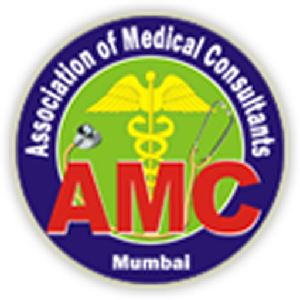Chapter 1: Epidemiology of COVID-19: AIIMS Video, 65 mins webinar: COVID 19: This online webinar (almost 65 minutes) was conducted and recorded by AIIMS on 27 March 2020. Dr Vijay Hadda, Associate Professor of Department of Pulmonary Critical Care and Sleep Medicine, presented about the epidemiology and diagnosis of COVID-19 along with Dr Saurabh Mittal who explained practices of Infection Prevention Control (IPC) measures.
Chapter 2: Testing and diagnosis:
Unit 1 (PDF Document): WHO Module 5: Differential diagnosis, specimen collection & diagnostic tests. At the end of this module, you will be able to: • Develop a differential diagnosis for patients with severe pneumonia. • Recognize patients with SARI that may have respiratory virus with pandemic potential. • Describe when and what specimens to collect for laboratory diagnosis. • Describe the characteristics of diagnostic tests for respiratory virus infections.
Unit 2 (PDF Document): WHO Guidance document: Laboratory testing for coronavirus disease (COVID-19) in suspected human cases. Interim guidance issued 19 March 2020.
Unit 3 (Video, 03 mins): How Coronavirus Test Kits Work: This brief news video by the Wall Street Journal describes the challenge of developing an accurate coronavirus test kit as well some of the ways that testing can produce inaccurate results.
Unit 4: Guidelines for screening centre (NCDC)
Unit 5: SOP on specimen collection, packaging and transport in ARD: The document from NCDC, provides detailed information about collecting the sample of COVID-19 patient and about its packaging and transportation.
Unit 6: Specimen collection proforma: The proforma to be filled for collecting samples of positive or suspected COVID-19 patient (NCDC)
Chapter 3: Infection prevention control
Unit 1: PDF document: This document by NCDC gives standard recommendations to prevent spread of infection which include standard precaution, contact precaution and respiratory precaution
Unit 2: PDF document: Guidelines on infection prevention and control provided by MoHFW covers introduction, fundamentals of healthcare associated infections, infection prevention and control program, procedures and practice for IPC, control of environment, IPC in special units or situation, etc
Chapter 4: Personal protective equipment
Unit 1: PDF document: This document is provided by WHO which gives recommendations for the rational use of personal protective equipment (PPE) in healthcare and community settings, as well as during the handling of cargo; in this context, PPE includes gloves, medical masks, goggles or a face shield, and gowns, as well as for specific procedures, respirators (i.e. N95 or FFP2 standard or equivalent) and aprons.
Unit 2: Recorded webinar by AIIMS: This webinar was recorded on 30th March 2020. The webinar gives detail explanation about how the health care professional should prepare themself before examining the COVID-19 patient and how and where to dispose the mask, after examining the COVID-19 patients.
Unit-3: Video by MoHFW on appropriate PPE used in different areas of hospital
Chapter 5: Isolation and quarantine
Unit 1: Isolation facility set up: This booklet is provided from NCDC which gives complete information about how to prepare the isolation wards, and the precautions to be adapted while wearing and removing personal protective equipment
Unit 2: Guidelines for disinfection of quarantine facility of COVID-19: This document is provided by NCDC which provides detailed guidelines about the disinfection facility of coronavirus patient
Unit 3: Guidelines for quarantine of patient: This document from NCDC provides detailed information about procedures required to be adapted for preparing quarantine facilities, like preparing infrastructure, medical facility etc.
Chapter 6: Waste management
Unit 1: PDF document: This interim guidance supplements the infection prevention and control (IPC) documents by summarizing, WHO guidance on water, sanitation and healthcare waste relevant to viruses, including coronaviruses. It is intended for water and sanitation practitioners and providers and healthcare providers who want to know more about water, sanitation and hygiene (WASH) risks and practices.
Unit 2: PDF document: Containment Plan for Large Outbreaks Guidelines for Handling, Treatment and Disposal of Waste Generated during Treatment/Diagnosis/Quarantine of COVID-19 Patients: Following specific guidelines provided by MoHFW for management of waste generated during diagnostics and treatment of COVID-19 suspected/confirmed patients, are required to be followed by all the stakeholders including isolation wards, quarantine centers, sample collection centers, laboratories, ULBs and common biomedical waste treatment and disposal facilities, in addition to existing practices under BMW Management Rules, 2016.
Chapter 7: Clinical management of COVID-19
Unit 1: AIIMS webinar: Management of COVID-19: In this webinar conducted and recorded by AIIMS on 31 Mar 2020, Dr Anant Mohan, Professor and Head Department of Pulmonary, Critical Care and Sleep Medicine (AIIMS) explained about the management of COVID-19 cases. Dr Karan Madan MD, DM Associate Professor of Pulmonary Critical Care and Sleep Medicine (AIIMS) discusses about management of severe COVID-19, i,e ARDS and shock.
Unit 2: AIIMS webinar on ICU and ventilator strategy: This online webinar (almost 1 Hour, 12 minutes) was conducted and recorded by AIIMS on 1 April 2020. Dr. Dalim Kumar Badiya, MD.EDIC, additional professor, Anesthesiology, Pain medicine and Criticare from AIIMS, presented about how to take care of critically ill patient of COVID-19 in ICU, along with Dr Bikash Ranjan Roy, Associate professor Anesthesiology, Pain medicine and Critical care, AIIMS, who explained Ventilation strategy in COVID-19 patient.
Unit 3: PDF document: Ventilator for COVID-19 patient: This document by MoHFW provides the information about the essential technical features required for handling COVID-19 patient on ventilators.
Unit 4: AIIMS webinar on ICU and aerosol: In this webinar conducted and recorded by AIIMS on 2nd April 2020, Prof Anjan Trikha, Chairman clinical managerial group, JPNT COVID centre, Department of Anesthesiology and pain medicine and critical care (AIIMS) explained about the rapid creation of COVID-19 ICU and Prof Vimi Rewari, Department of Anesthesiology and pain medicine and critical care (AIIMS) discusses about management of Aerosol generating procedures.
Chapter 8: Pregnancy and COVID-19
Unit 1: PDF document by FOGSI: This documents states, measures for pregnant women to prevent COVID-19 infection, precautions for healthcare workers (HCW), clinical presentation of COVID-19 inpPregnancy, testing for COVID-19 in pregnancy, notification of COVID-19 cases in pregnancy, management of antenatal, postnatal cases, breast feeding.
Unit 2: AIIMS webinar: This webinar was recorded on 3rd April 2020 for nursing staff. This webinar discusses about the management of women with COVID-19 during labor, care of pregnant women with COVID-19, postpartum care, care of neonates with COVID-19 and infection prevention control in inpatient obstetric settings.
Unit 3: AIIMS webinar on pregnancy and labour management: This webinar was conducted by AIIMS on 9th April 2020 by Prof.Neerja Bhatla on Optimising antenatal care during the COVID-19 pandemic and Labour management for pregnant women with suspected or confirmed COVID-19 infection by Dr. K Aparna Sharma
Unit 4: Guidance for management of pregnant women in COVID-19 pandemic (ICMR PDF document): These infection prevention and control considerations are for healthcare facilities providing obstetric care for pregnant patients with confirmed novel coronavirus disease (COVID-19) or pregnant persons under investigation (PUI) in obstetric healthcare settings including obstetrical triage, labour and delivery, recovery and inpatient postpartum settings.
Chapter 9: Risk assessment and clinical management of COVID-19 patient: PDF document: Current evidence suggests that the virus that causes COVID-19 is transmitted between people through close contact and droplets. People most at risk of acquiring the disease are those who are in contact with or care for patients with COVID-19. This inevitably places health care workers (HCWs) at high risk of infection. Protecting HCWs is of paramount importance to WHO. Understanding how HCW exposure to COVID 19 virus translates into risk of infection is critical for informing infection prevention and control (IPC) recommendations. This data collection form and risk assessment tool can be used to identify IPC breaches and define policies that will mitigate HCW exposure and nosocomial infection.
Chapter 10: Guidelines for dialysis of COVID-19 patient by MoHFW: COVID-19, disease is currently pandemic which produces high morbidity in elderly patients. Patients with kidney disorder and under dialysis are also vulnerable group. This document gives the guidelines to handle the COVID-19 patient under dialysis
Chapter 11: Guidelines for Liver Transplantation and COVID-19 infection:(ICMR PDF document): These guidelines have been prepared by Liver Transplant Society of India (LTSI). In view of rapidly changing scenario of COVID-19 infection in India, these guidelines may be revised/updated accordingly.
Chapter 12: Discharge policy: This document provided by NCDC describes about policy guidelines about the discharge policy of suspected and positive COVID-19 patient
Chapter 13: Dead body management: This document provided by NCDC gives the detailed explanation about the standard precautions which needs to be followed while handling dead body of COVID-19 patient, which includes infection and prevention control practice, removal of body from isolation area, handling of body in mortuary, autopsies, crematorium or burial etc
Chapter 14: Myths and Facts: This webinar was recorded on 1st April 2020 by AIIMS and provide detailed explanation about myths and facts of COVID-19.



